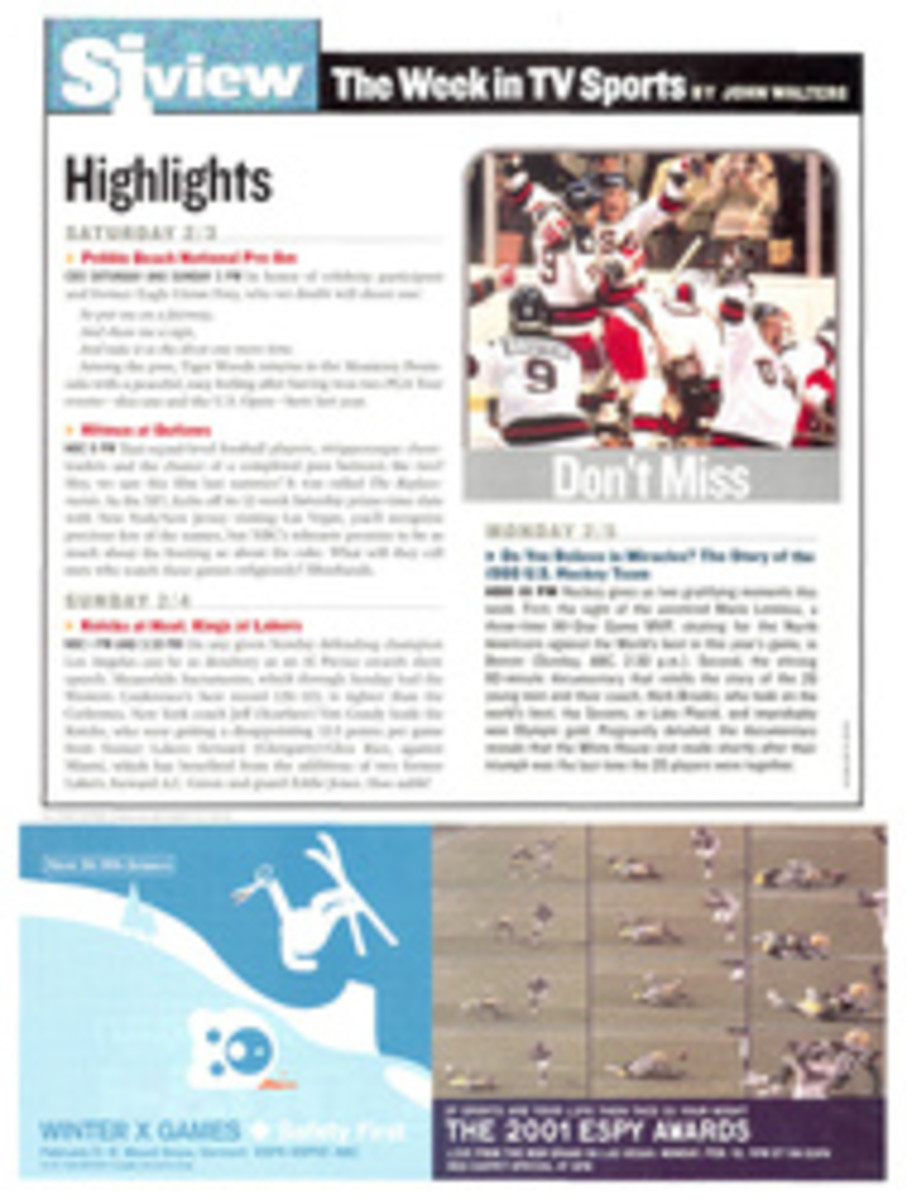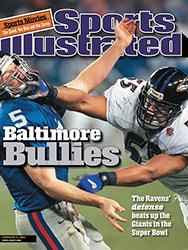
Inside The NHL
A Shot Idea
The once novel All-Star format pitting North America against the
World ought to be junked
The NHL concocted its North America-versus-the-World format for
the 1998 All-Star Game as a prelude to the league's inaugural
participation in the Winter Olympics that year. It was a nice
diversion and a break from the longstanding
conference-against-conference setup, but it should have been a
one-time thing. Now that the novelty has worn off, this much is
clear: North America versus the World is a senseless and
unsuitable enterprise. The format detracts from the All-Star
Game's competitive spirit, discriminates on the basis of
ethnicity and plays into the xenophobic stereotyping that the
league has otherwise worked to eliminate.
What is a World team anyway? The Olympics pit clubs made up of
players who share a national pride rooted in the social,
political and environmental circumstances of their native land.
Are we to look at this year's World team and believe that, for
example, Red Wings defenseman Nicklas Lidstrom, a Swede, shares a
bond with Sabres goalie Dominik Hasek, a Czech? Or that either of
them feels a compatriotic love for the Panthers' Pavel Bure, a
Russian? The lumping of players of disparate backgrounds--whose
only shared trait is that they're foreigners in the eyes of the
U.S. and Canadian executives who conceived the All-Star
format--smacks of ugly Americanism. Segregating the talent this
way betrays the global melting pot ideal that is one of the NHL's
greatest assets. There are several tangible reasons the league
should return to East versus West, such as:
--Despite outnumbering World players 2 to 1 on NHL rosters, North
Americans get the same allotment of All-Star spots. Many players
and coaches feel that the All-Star selection system is unfair to
the majority. "A lot of great North American players get left
out," says Leafs center Mats Sundin, a five-time All-Star from
Sweden. "It's more fun when it's different conferences. You don't
have to worry if you're the best Canadian or the best American or
the best European."
--Players wouldn't have to compete against teammates. Body
checks and blocked shots are scarce in any All-Star Game, but
fear of injuring a teammate dilutes the game even further. You
can bet World center Peter Forsberg isn't going to unleash a
slap shot if North American defenseman Raymond Bourque, his
Avalanche teammate, is standing in the puck's path.
--A conference-based showdown would give the home crowd a team to
root for, which would lend energy to the arena and to the TV
broadcast. In this week's game in Colorado the crowd's allegiance
will be split because the Avalanche is represented on both sides.
--An East-West matchup would put bragging rights at stake and
would provide a measure of a conference's relative strength. At a
time when the balance of power so heavily favors the Western
Conference, the East could earn some respect with an All-Star
win.
The NHL is committed to the current format through next season.
After that, scrap it.
All-Star Game in Europe?
Crossing the Unfrozen Pond
One way to capture the global spirit of the game would be to
stage All-Star weekend in Europe every five years or so. This
would showcase hockey's best to an enthusiastic fan base in
Eastern Europe and Scandinavia, and the NHL could do some good by
earmarking a portion of the game's proceeds to the European
leagues that feed talent to the NHL.
Stockholm, Helsinki, Moscow and other cities have excellent
arenas, and holding All-Star festivities in such places wouldn't
be a total loss for U.S. and Canadian fans. If the game were
played at 8 p.m on Sunday in Europe, it could be televised live
in the U.S. and Canada at about the same time it usually airs.
While commissioner Gary Bettman likes the idea of playing the
game in Europe, he's concerned about the toll the midseason
travel might take on the players. Considering that the league
will shut down for about two weeks for the Olympics next season,
the NHL could extend the All-Star break to five days in a
non-Olympic year. That would be a minor disruption to the season
and would give players plenty of time to bounce back from the
trip.
Latest TV Innovation
Info You'll Want To Know
After a series of TV gimmicks ranging from the glowing puck (a
failure) to miked players (a plus) to netcams (cool), the NHL is
about to unveil its niftiest idea yet. During Sunday's All-Star
Game in Denver two players from each team--Raymond Bourque and
Theo Fleury for North America, Pavel Bure and Nicklas Lidstrom
for the World--will wear tiny transmitters that monitor how fast
he skates and his exact position on the ice. If Bure gets loose
on a breakaway, for instance, viewers watching ABC's or the
Canadian Broadcasting Company's telecast could see a real-time
graphic showing his acceleration from, say, 15 mph to 20 to 25.
If Bourque is on the power play unit, fans might learn following
the match that he spent 52% of his ice time manning the point.
The transmitters will be attached to the players' helmets and
will send 30 signals per second to receivers set up around the
Pepsi Center. "Trakus [the tracking system] enables us to provide
information that viewers can connect to," says Adam Acone, the
league's vice president of broadcasting and programming. "It lets
you track player habits, which adds to the storyline."
While Trakus isn't expected to be used again until the Stanley
Cup finals at the earliest, the NHL plans to have the system in
place for most of its broadcasts within two years. By monitoring
such things as how many miles a player skates each game and a
player's average skating speed, Trakus should enhance viewing for
fans and might eventually aid coaches as well.
"This could be a valuable tool for finding out more about
players," says Avalanche coach Bob Hartley. "You could use the
technology for scouting, player development and even to help
gauge someone's progress after an injury."
That's a far cry from a glowing puck.
For the latest scores and stats, plus more news and analysis
from Michael Farber and Kostya Kennedy, go to cnnsi.com/hockey.
COLOR PHOTO: DAVID E. KLUTHO The World versus North America--here Tommy Salo stops Brendan Shanahan--is xenophobic.
COLOR PHOTO: J. MCISAAC/B. BENNETT STUDIOS
COLOR PHOTO: A. MARLIN/B. BENNETT STUDIOS
WHOM WOULD YOU RATHER HAVE?
MILAN HEJDUK
AVALANCHE RW
A spectacular skater, he was the most surprising omission from
this year's All-Star rosters. Through Sunday he had 29 goals and
was a candidate for league MVP.
OR
FREDRIK MODIN
LIGHTNING LW
Possessor of a blistering slap shot, he expressed surprise when
picked for the World All-Star roster. Through Sunday he had 22
goals and was the Lightning's MVP.
The Verdict: To everyone but the NHL executives who select the
reserves for the All-Star game, the answer is obvious: Milan's
the man.

